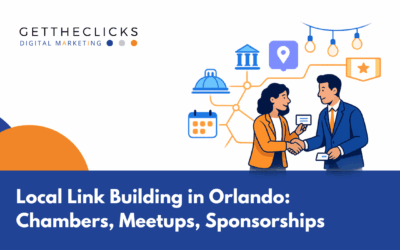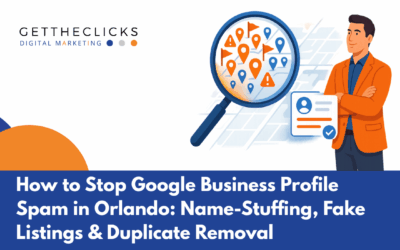Search engine optimization can be divided into two main categories: off-page SEO which mostly revolves around link building, and on-page SEO which focuses on the more technical aspects of your website. Both need to co-exist and be worked on simultaneously for the best SEO results.
In this on-page SEO guide, we’ll help you understand why on-page SEO is so important and what are the various elements involved.
What is On-Page SEO?
There are many different aspects of SEO, but on-page SEO is one of the more visible aspects that website owners tend to think of. Also known as on-site SEO, it focuses on optimizing content, meta-tags, titles, internal links, external links, anchor text, and other visible aspects.
Essentially, on-page SEO revolves around the changes and optimizations you can make on a web page itself, with the goal of improving its search engine rankings. It focuses on helping Google and searchers better understand and digest your content.
Why is On-Page SEO Important?
The goal of on-page SEO is to help both Google and users understand your content better so that more users find your content, which increases your traffic. However, you can’t just dive into SEO without a plan or strategy. Just like all other aspects of SEO and website creation, you need a plan when optimizing your on-page SEO to ensure you meet your goals.
On-page SEO is crucial because it lets search engines know what your content is about. With a clearer idea of your content, search engines will be able to promote your site for more relevant search queries, increasing your visibility online.
Steps You Should Follow for On-Page SEO
Before you start tackling on-page SEO, you need to figure out what on-page SEO elements you will focus on, as well as how you plan on optimizing them. There’s a lot to keep in mind with on-page factors, so to start, here is an on-page SEO checklist.

1. Use the Right Headings
HTML has multiple different heading sizes depending on whether something is a title, a subheading, or a category within a subheading. When creating content, it’s crucial to use the right HTML headings to help Google and other search engines better understand your content and break it up in an easy-to-read manner.
Your first heading is H1, otherwise known as the title tag. This should only ever be used for your title, and there should only be one per page. Using an audit tool like Ahrefs or Screaming Frog, search your site for pages that are missing an H1 title tag or accidentally featuring multiple title tags. This will give you a clear idea of where to start making changes.
Next, you have five more heading options: H2, H3, H4, H5, and H6. Use them in order as you create subheadings, sub-subheadings, and so on.
For example, if your title is ‘Art Around the World’, you might make subheadings with the H2 tag titled ‘Art from Asia’, ‘Art from Africa’, and ‘Art from the Americas’. If you decide to add another category within one of these subheadings, such as ‘Female Artists’ and ‘Male Artists’ you’ll use the H3 tag.
Using the right headings helps users and search engines skim your content for the information they want or need. In the example above, your content may come up for someone doing a report on female artists around the world.
When looking through your content, they’ll skim it for information surrounding only female artists. Thanks to your excellent organization and the use of heading tags, the user will find exactly what they want without having to look too hard.
2. Write Enticing Titles
It can be hard to define what an “enticing” title is, but there are a few technical aspects that you can follow when coming up with your title.
First, keep your titles fairly short. They should be between 15 and 70 characters for every page.
Second, be descriptive and match search intent. You shouldn’t write a title that’s vague or doesn’t match the content or your user’s search intent. Additionally, ensure you aren’t clickbaiting as this will negatively impact your site’s bounce rate and subsequent SEO rankings.
Third, add your target keyword. Keywords should be kept in mind with every aspect of content creation, so don’t forget to add them to your title. Keep it relevant and short like what’s been mentioned above, but include at least one target keyword so users know your content will be useful and search engines will deem your content as being relevant for that search term.
3. Don’t Forget About Meta Descriptions
While meta descriptions don’t directly affect your ranking on search engine results pages, they help attract more traffic. Meta descriptions are shown in the search results and provide users with a little snippet of your content. It can help users determine if they should or shouldn’t click on your content.
When it comes to writing your meta description, here are a few helpful guidelines:
- Keep it between 100 and 300 characters, but know that 160 characters is the sweet spot.
- Address the reader directly.
- Make it expand on the title tag while still matching search intent.
- Include relevant keywords in your meta description, especially ones you didn’t put in the title but that are still relevant.
4. Make URL Structure SEO Friendly
Did you know you can create SEO friendly URLs? When writing SEO friendly URLs, include relevant keywords to show Google that the content on a certain page is relevant to a search query. Instead of leaving your URLs as an array of letters, numbers, and symbols, include meaningful search terms and keep your URL structure short and concise.
5. Optimize All Images
To optimize images, you’ll need to start from the very beginning, before you even upload the image to your site. Make sure the file name describes the image, rather than just leaving it as IMG_983048.jpg or something similar. As an example, name your image something like ‘cute-black-cat.jpg’.
With descriptive filenames, you give Google an extra way to sort your content in the search results. Be careful not to keyword stuff and keep the filenames short, but naming your files will help optimize the images even once they’re uploaded to your site.
Alt tag is another way to optimize your images. It helps both Google and those who use screen readers understand what the image is.
Just like with your file names and meta-description, keep your image alt tags descriptive and concise without keyword stuffing. You also don’t need to start off with “Image of…”.
One last thing to keep in mind concerning images is to compress them. This will help reduce your site’s load time and help both your users and Google appreciate your content more.
6. Be an Authority
Google will always rank authoritative content above unverified or amateur content. As such, you need to make sure that your content shows your expertise on a matter and presents you as an authoritative source. Both your readers and Google will expect you to have some visible level of expertise if you’re creating content concerning a certain topic.
There are a few different ways to show readers and Google that you are a trustworthy source of information and an authority on the topic.
First, make sure you clearly present the topic. Prove to readers that you know what you’re talking about, and don’t leave room for doubt. Always strive to produce high quality content that fulfills your user’s intent.
Second, provide information sources. This will help you further establish yourself as someone trustworthy who does research into the topics they cover. If you provide a reference link to a previous post you’ve written, you can also help establish your brand as an authority source.
Third, have an author page. Readers want to know who wrote the content they’re reading, so create an author page that they can refer to. You could do this by adding a link to the author’s information on your ‘About Us’ page. Another good idea is to include a quick blurb at the end of each blog post that briefly introduces the author. Both methods are a great way to give your readers more information about your expertise.
Lastly, ensure there isn’t any information that is easily proven false. If you know that what you’re writing isn’t true or you aren’t sure, don’t write it. Verify everything before publishing; otherwise, Google and your readers will think of your brand as not being credible.
7. Create Snippet-Ready Content
Featured snippets are a great way for your content to reach users and rank higher in search results. While there are no fixed and clear rules for how to be chosen as the coveted Featured Snippet, you can still try to optimize your content to increase your odds.
Featured snippets come from one of the top ten ranked web pages within search results. Being chosen for a featured snippet is also dependent on the target keywords in the search query and your content.
You have the best odds of being chosen for a featured snippet if you already rank in the top ten results for a specific keyword and Google offers a featured snippet spot for the keyword.
Another snippet to aim for is a rich snippet. These are snippets in the search results that highlight data surrounding your content. Often, you’ll see rich snippets for recipes. The data used usually include the overall ratings, the number of votes, and how long the recipe takes to make.
For different types of websites, the rich snippet information will vary, but it always relies on structured data. This structured data doesn’t affect your ranking, but it does ensure that your website is easier to read in the search results and more eye-catching, making it much more likely that users will click on your content.
8. Write SEO Friendly Content

Most companies are already aiming to write SEO friendly content, but they don’t always know how to do so. As one of the biggest parts of good on-page SEO, your content really needs to read well, be optimized, and meet SEO standards.
SEO-friendly content involves a lot of different aspects. Keywords, heading tags, and every other part of your written content needs to match search intent, user needs, and Google’s standards. Unfortunately, this can be challenging if you don’t even know where to start.
One of the oldest tricks in the book for writing SEO-friendly content is to use your main keyword within the first 100 words of your post. It should always appear in one of the first few lines, as Google pays attention to what terms and keywords are written early in an article.
Another significant aspect, which we’ve already mentioned, is using heading tags. Learn how and when to use each tag and use it correctly. Make sure to use heading tags in a comprehensive manner in every post you publish so that Google and users can read, understand, and enjoy the content you’ve provided.
A big no-no to keep in mind is keyword stuffing. When you first start creating content for your website, it’s easy to feel the need to cram as many keywords in one article as possible. Do not do this! Not only does this make your post hard to read, but Google’s algorithm will take this into account and penalize your site for it.
Keyword stuffing doesn’t earn you any points when you write content, so don’t do it. There is such a thing as over-optimized keyword density or keyword frequency. Instead, space your keywords out naturally and keep your keyword density in line with that of the top ranking sites for your target keyword on the search engine results page.
Also, don’t try to fit too much information in one post. You can make multiple posts covering a variety of subjects, so do that instead. Not only does it make it easier for users to get the information they want, but it also gives you more content that may draw in users.
Your On-Page SEO Strategy Is Essential to Your Website’s Success
A robust on-page SEO process will help search engines understand your content and website better. With a strong on-page SEO strategy, search engines will be able to effectively tell if a particular query is relevant to your website, therefore, displaying your web pages at the top of search engine results pages.
Just like off-page SEO, a good on-page SEO strategy requires a lot of specialized knowledge and experience that most business owners simply don’t have. If you want significant results and improvements to your search rankings, it’s time to leave your website’s SEO to our team of experts. Let Get The Clicks take care of your on-page optimization while you focus on what you do best. Call us today to find out more about how we can help you get more online traffic to grow your business!





